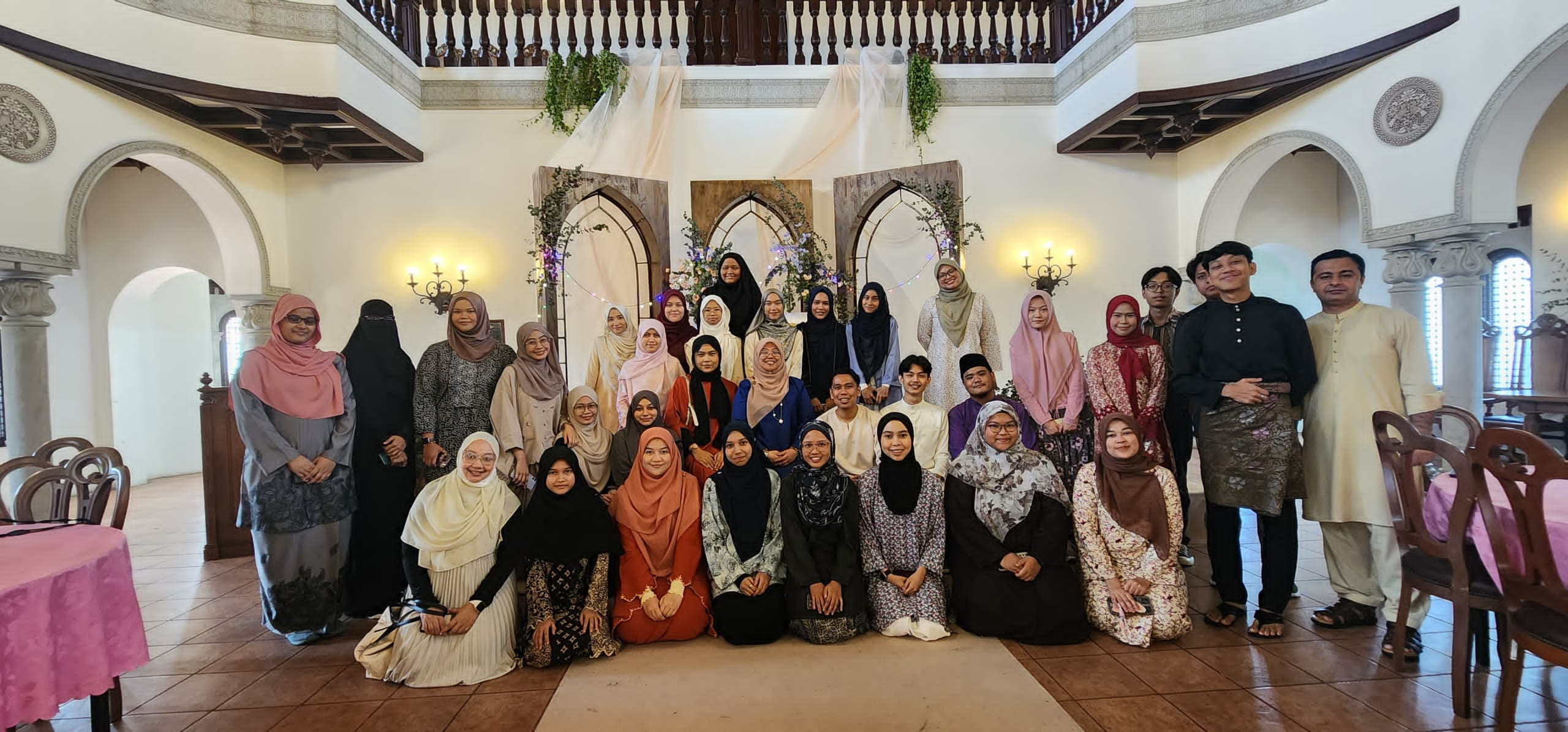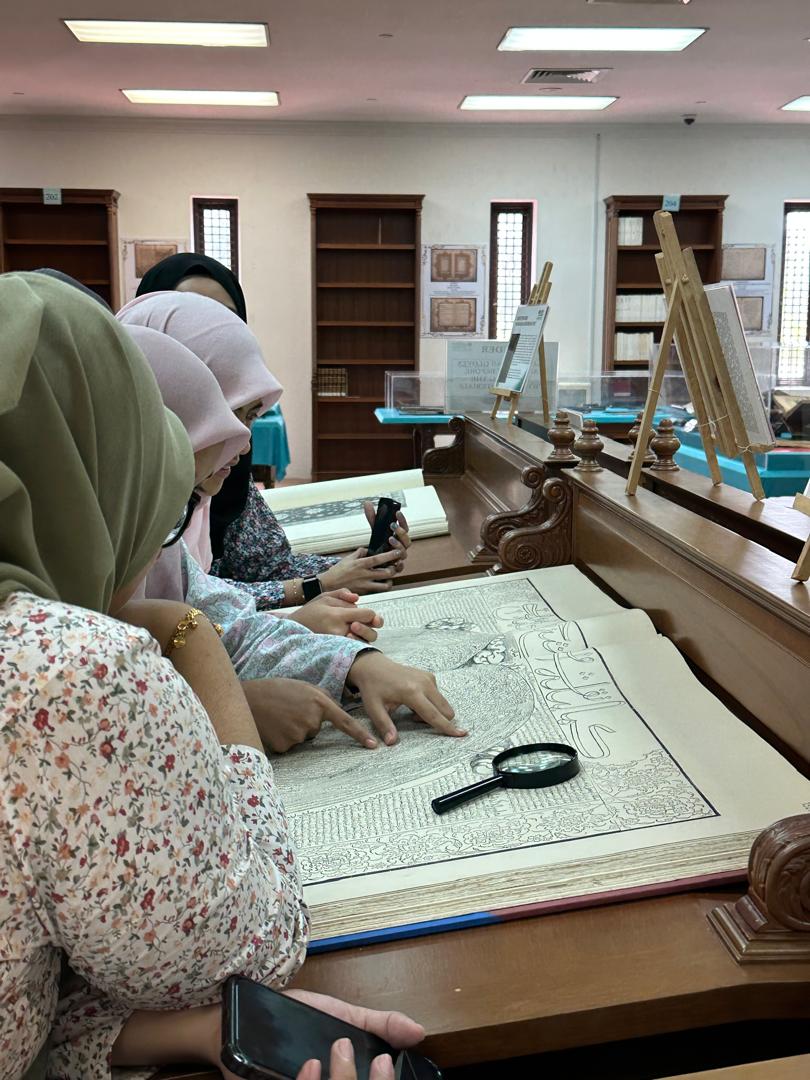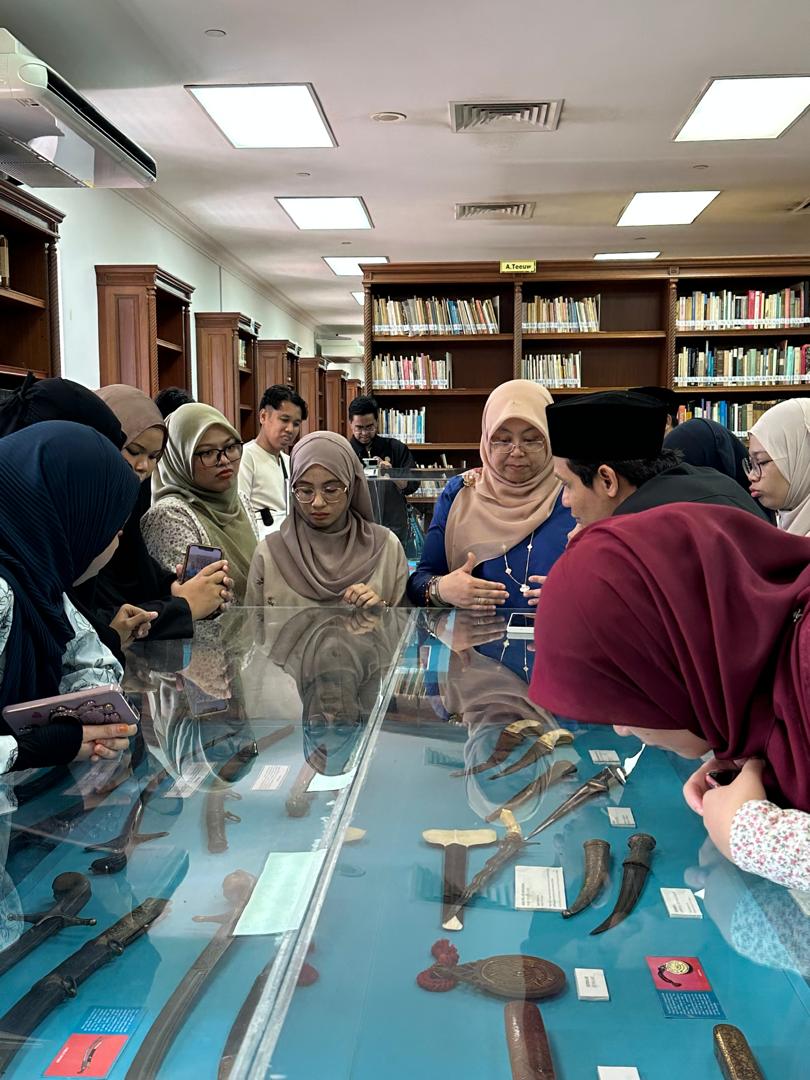
By Nur Atiqah Shamsudin
GOMBAK, 8 May, 2024: Assoc. Prof. Dr. Nurazzura Bt Mohamad Diah and her students taking the course, Social Anthropology, attended an exhibition on Alhambra at IIUM’s International Institute of Islamic Thought and Civilization (ISTAC). The visit was with the aim of deepening their understanding of ISTAC’s architectural intricacies and the history of its development, immersing them in the art of ISTAC’s architecture while exploring its intangible cultural aspects.
The tour commenced with a mesmerizing sight: the fountain at the heart of ISTAC, adorned with lion elements reminiscent of the 9th-century Alhambra Fountain. Notably, the famous Malaysian philosopher, Tan Sri Professor Dr. Syed Naquib al-Attas who designed these lions in a seated posture; a subtle nod to Alhambra’s heritage. This design choice not only mirrors the physical beauty of Alhambra but also delves into the realm of intangible cultural elements, paying homage to its rich cultural heritage and traditions. Through elements like the lion figures, symbolizing strength, power, and nobility, and the architectural motifs evoking Islamic artistry and aesthetics, visitors were invited to connect with intangible cultural values embedded within the fountain, fostering a deeper appreciation for its historical significance.


Continuing the journey, the significance of each tile within ISTAC facing the Kaaba was highlighted. This architectural feature symbolized a profound connection to intangible cultural heritage, reflecting the spiritual essence of Islamic culture. Beyond its physical alignment, the design embodied intangible values such as piety, devotion, and unity, serving as a reminder of the spiritual journey undertaken by individuals within ISTAC. By orienting each tile towards the Kaaba, visitors were encouraged to contemplate their spiritual connection to Islam and its broader cultural heritage, fostering a sense of reverence and belonging within the space.
Upon entering the ISTAC library, SOCA students were greeted with a briefing on artifacts and ancient books. The library’s three levels held treasures from bygone eras, with the third level housing ancient books, artifacts, and manuscripts. As they stepped through the door, the intense scent of books enveloped the air. Assoc. Prof. Dr. Azzura remarked that this scent was considered intangible, carrying traces of history and cultural heritage that transcended physical senses. It served as a gateway to a rich and meaningful intangible world of knowledge and wisdom, inviting students to delve into centuries-old stories and contemplate humanity’s intellectual journey. Through the scent of books, students were reminded of traditional values such as perseverance, diligence, and the thirst for knowledge, enriching their exploration of ISTAC’s cultural and educational offerings.


ISTAC’s design is not a mere replica of Alhambra, but rather a thoughtful homage that transcends physical resemblance. The lion fountain, intricate architecture, and Kaaba-oriented tiles all draw inspiration from Alhambra’s grandeur and rich cultural heritage. However, these elements are infused with a distinct Malaysian spirit, evident in the seated lion posture and emphasis on spiritual connection. By experiencing these echoes of Alhambra alongside the scent of aged knowledge in the library, the students embarked on a multi-layered journey. The visitors gained a deeper appreciation for Alhambra’s legacy while simultaneously discovering how ISTAC interprets and transmits this heritage within a local context. ISTAC serves as a testament to the enduring power of cultural inspiration, where the past informs the present, fostering a bridge between civilizations.***
- AHAS KIRKHS Takreem 2024: Honouring Excellence and Achievements - March 4, 2025
- SOCA Students take the Lead: Flash Mob and Campaigns ignite Environmental Awareness at IIUM - December 8, 2024
- SOCARNIVAL 2024: Malaysian Society and Culture Exhibition showcases Rich Ethnic Diversity - November 16, 2024